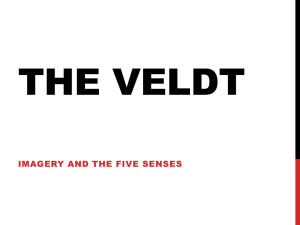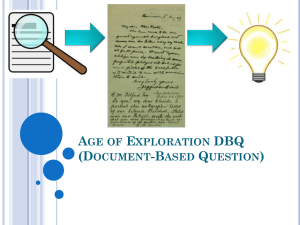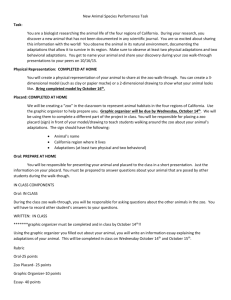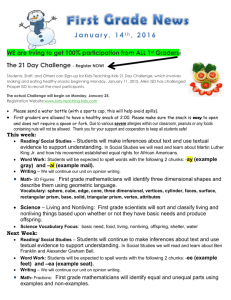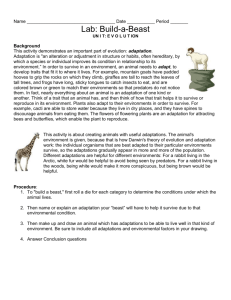Powerpoint
advertisement
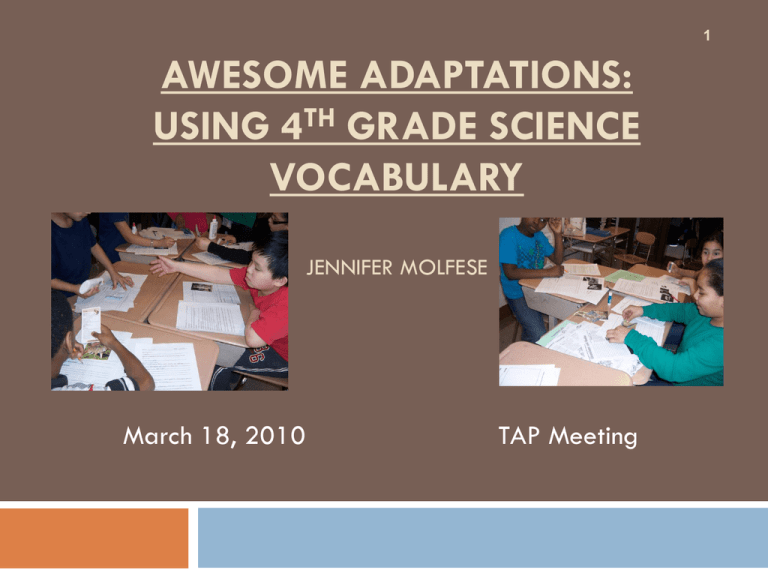
1 AWESOME ADAPTATIONS: USING 4TH GRADE SCIENCE VOCABULARY JENNIFER MOLFESE March 18, 2010 TAP Meeting Learning Experience Focus Question 2 The focus questions of this learning experience are: How can I improve my rubric? How could I extend this learning experience (grade level, subject)? Buffalo Public School #3 3 Located on the West Side of Buffalo PK-8 Building Over 750 students 7 Spanish Bilingual Classes (K-6) Servicing over 200 ESL Students Grade Level/Ability of Students 4 The work was completed by students in a fourth grade classroom in an urban school district. 24 students total 12 girls 12 boys 6 students receive consultant teacher services 4 students receive speech 7 students receive ESL services Time Frame 5 Three 30 – 45 minute sessions This learning experience takes more time to prepare before teaching than during or after. The pre-planning includes gathering all student materials, and creating student work packets. Daily planning includes time to gather materials and grade student work. After the learning experience time will be needed to look at student results and grade animal adaptation posters Objectives 6 Overview of what students need to know and be able to do to succeed: Prior to Learning Experience Demonstrate an understanding of graphic organizers Demonstrate an ability to work with peers Demonstrate an ability to follow directions During and After the Learning Experience Share personal ideas about living things with the whole group Classify data as a small group Make and record observations of organisms Essential Question 7 Essential Question: How do living things stay alive? Guiding Questions: What do animals need to live? What are nonliving things? What are living things? How do animals respond to change in their environment? What are some animal characteristics influenced by the environment? Diagnostic Questions: What do animals need to live? How do animals respond to change in their environment? Enduring Understanding 8 Animals, plants and humans need certain conditions in order to survive. Student’s Tasks Day 1 Participate in the worm anticipatory set Read What animals need to live List what animals and plants need to survive on “Animal and Plants” graphic organizer Complete the cloze activity Play vocabulary scatter (whole group). 9 Student’s Tasks (continued) 10 Day 2 Students choose a mystery adaptation out of a box Complete the responding to change cloze activity Complete t-chart with sticky notes Watch animal adaptation video Observe organisms and collect data Play vocabulary scatter Students complete graphic organizer Day 3 Living and non-living animal adaptation project Present poster to the class Developing Student Work 11 Developing 0-13 (65%). Proficient Student Work 12 Proficient 14-16 (70%) Distinguished Student Work 13 Distinguished scored 17-20 (85%) Additional Student Work 14 Students watched the animal adaptations video. NYS Learning Standard: Math, Science and Technology (p.1) 15 MST Standard 4: The Living Environment: Students will understand and apply scientific concepts, principles, and theories pertaining to the physical and living environment and recognize the historical development of ideas in science. Key Idea 1: Living things are both similar and different from each other and from nonliving things. Key Idea 3: Individual organisms and species change over time. Performance Indicators: 4. LE 1.1: Describe the characteristics of and variations between living and nonliving things. 1.1a Animals need air, water, and food in order to live and thrive. 4.LE 3.1 Describe how the structures of plants and animals complement the environment of the plant or animal. 1.1c In order to survive in their environment, plants and animals must be adapted to that environment. Animal adaptations include coloration for warning or attraction, camouflage, defense mechanisms, movement, and migration. Assessments 16 Diagnostic Assessments: Vocabulary Pre Test Pre-assessment tools (4th grade Living Environment Science Test Questions, 2009) Formative Assessments: “Animal and Plants” graphic organizer Class size “Animal and Plants” graphic organizer “Living and Nonliving” Venn Diagram Ticket out the Door Questions Summative Assessments: Scoring Rubric for poster assessment Vocabulary post assessment Pre-assessment tools (4th grade Living Environment Science Test Questions, 2009) Modification Table 17 Modification Environmental and Management Preferred seating (p. 8) Rationale Benefit Close to teacher Proximity or front board control: provides student provides with immediate immediate reinforcement. It feedback for allows supportive student feedback. Reflections 18 Thanks to this peer review group for all of your assistance in developing my LE during the peer review process. Thank You!




